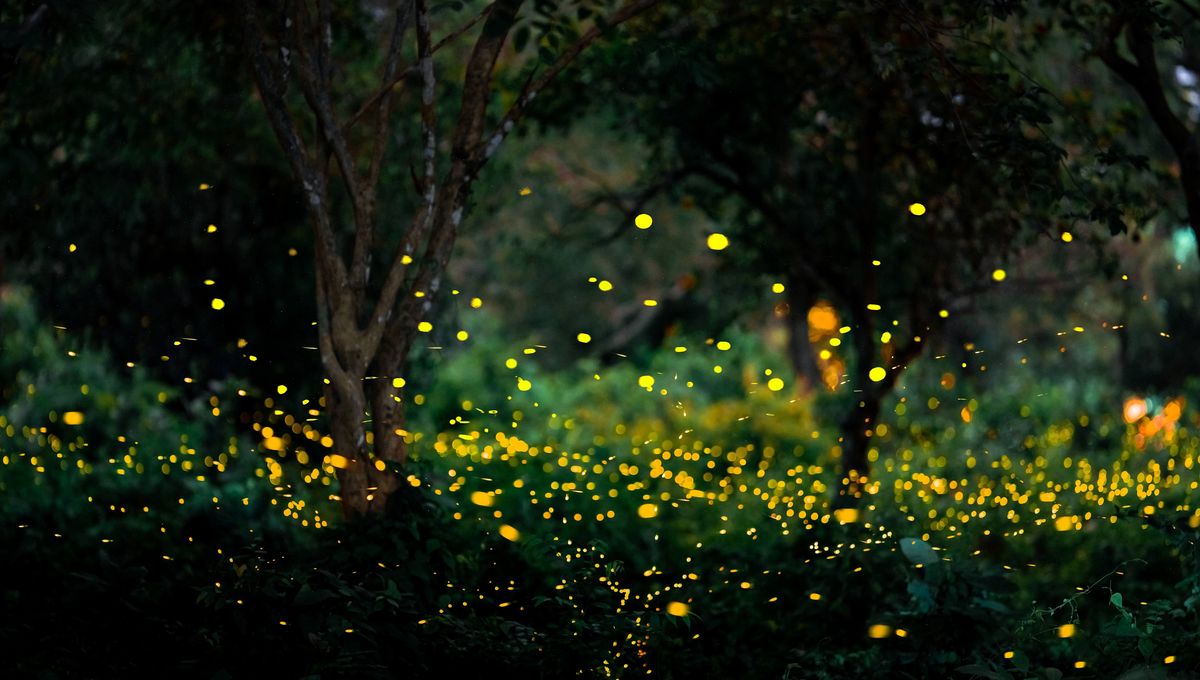
Are we the last generation to witness the twinkling beauty of fireflies during the warm summer evenings? That’s a claim that has been circulating on social media for a while, but is it true? In short, not quite.
Of course, our planet is currently caught in a bad situation. We can understand this as what is called a “polycrisis” – a multitude of interrelated global issues that amplify one another. International wars, climate change, global pollution, water and food insecurities, economic instability, democratic backsliding, and more are all ingredients in the crap soup we call the present. Many of these issues are contributing to the widespread loss of biodiversity across the planet, which is indeed killing off many species.
This is a terrible situation that needs urgent collective action to address. But even when faced by such significant problems, it’s important for us to keep track of what is actually going on without getting carried away.
The recent social media freak-out over fireflies is an example of this. The hype focuses on one excessively popular TikTok post that simply showed the statement “We are the last generation to see fireflies,” accompanied by shots of the little luminous critters doing what they do best. Over 6.4 million people have liked the video so far, and over 43,000 comments have been made on it, most of which echo the implied sadness.
Given the above-mentioned crap soup, it is easy to understand why this TikTok resonated with so many people, but as with all things on social media, it’s important for us to know exactly what’s going on.
In April 2024, a landmark study was published that did draw attention to the fading light of firefly populations across North America. The study identified multiple factors that are impacting their numbers, most of which relate to climate change, habitat loss and human influences.
The researchers assessed population changes with a mix of field surveys from citizen scientists and advanced machine learning techniques. This covered over 24,000 surveys from the Firefly Watch, a citizen science initiative.
“Subtle changes in climate patterns, especially related to temperature, are significantly impacting firefly breeding cycles and habitat quality,” said study author Darin McNeil, assistant professor of wildlife ecology and management at the University of Kentucky, in a statement.
Fireflies, which are beetles, thrive in temperate conditions with wet and warm summers. They love areas with standing water and long grass, which is ideal for breeding. However, global temperature rise and changes in precipitation patterns have led to drier conditions that reduce larval survival. In contrast, in some instances, excessively wet conditions have flooded their breeding grounds and disrupted their life cycles.
At the same time, urban growth and the accompanying expansion of sidewalks and roads have invaded their natural habitats. Light pollution from streetlights and commercial signs is also disruptive to their mating rituals, as it interferes with their natural bioluminescent communications. Agricultural practices are another problem; the extensive use of pesticides and herbicides has been linked to firefly number decline, most likely due to a combination of the compounds used killing off the insects’ prey while also being directly toxic to the fireflies themselves.
However, this was not a uniform issue. Some agricultural spaces had the highest firefly density, which may be due to practices – such as livestock grazing – that support the grassy conditions that they enjoy.
And this is the point of the whole study in relation to the social media hype: it is not a uniform issue. Yes, some local species of firefly are disappearing, but the firefly community as a whole is okay. This point was stressed by science communicator Hank Green in a TikTok that challenged the now widespread rumor that fireflies are about to go dark for the last time. In it, Green emphasizes the need to be critical of alarmist posts.
“I don’t want you to be so scared about everything,” he says. “I want us to be scared about the right things.”
And this is a good point to keep in mind. The situation out there is bad, but we can only deal with it if we have an accurate view of what is at stake. The study on fireflies is a great example of this. Although it does highlight the issues facing these beautiful insects, it also highlights the complexity of natural ecosystems while also indicating the need for tailored conservation.
It’s not a hopeless case and there’s still plenty that can be done to help them glow – such as limiting light pollution, preserving natural habitats, and implementing wildlife-friendly agricultural practices that support them.
Source Link: Are We Really The Last Generation To Have Fireflies?